Business in Laos, Vientiane. Laotian Economy
Laotian International Trade. Laos: textiles, tourism, Logistics, agribusiness
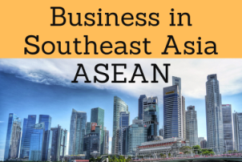
The Lao People's Democratic Republic: a free market system with active Government central planning.
Economy of the Lao People's Democratic Republic (Asia) is fundamentally a free market system with active central planning by the Government (similar to Chinese and Vietnamese models)
Laotian agriculture, mainly rice farming, dominates the economy of Laos, employing 75% of the population and producing 29% of GDP
China is becoming a major player in Laos
- Introduction to the Lao People's Democratic Republic (Southeast Asia ASEAN)
- Laotian Economy
- Doing Business in Vientiane
- International Trade of Laos
- Business Opportunities in Lao PDR:
- Manufacturing
- Textiles
- Tourism
- Agribusiness
- Services
- Transport and Logistics
- Investment in Laos
- Savan-Seno Special Economic Zone
- Case Study:
- Lao Brewery Company
- Xaoban Group
- Access to the Laotian Market
- Business Plan for Laos
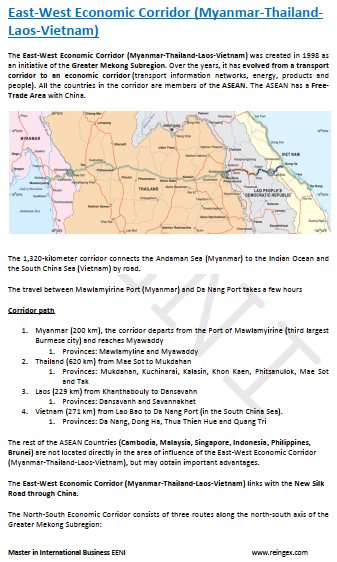

The educational aims of the Subject “Foreign Trade, Logistics and Business in the Lao People's Democratic Republic” are:
- To analyze the Laotian Economy, Logistics and Global Trade
- To conduct research on business opportunities in the Lao People's Democratic Republic
- To explore the Laotian trade relations with the student's country
- To learn about Laotian Trade Agreements
- To examine the profile of Laotian companies
- To develop a business plan for the Laotian Market

The Subject “Foreign Trade, Logistics and Business in Laos” is included within the curriculum of the following academic programs at EENI Global Business School:

Masters: International Business, Foreign Trade.
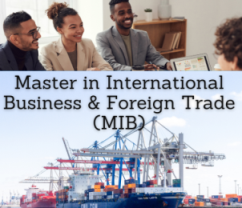
 Higher Education programs adapted to the Laotian Students.
Higher Education programs adapted to the Laotian Students.
- Subject Credits “Doing Business in Laos”: 1

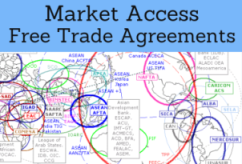
Laotian Market Access and Trade Agreements:
- Laos and the Buddhist Economic Area
- ASEAN
- ASEAN Free Trade Area
- ASEAN Economic Community
- Laos has trade agreements (as a member of ASEAN) with China, India, the EU, Japan, Korea, Russia, and the United States
- ASEAN (Cambodia)-Australia-New Zealand (Free Trade Area)
- Mekong Economic Cooperation
- Mekong River Commission
- Asia-Pacific Trade Agreement
- Regional Comprehensive Economic Association
- Greater Mekong Subregion
- Laos-Vietnam Trade Agreement
- Laos-Thailand Preferential Trading Arrangement
- GSP
Sample: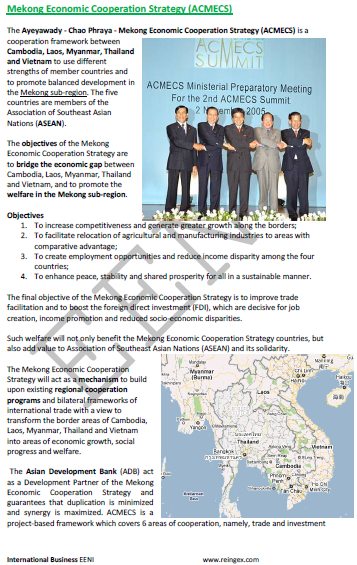
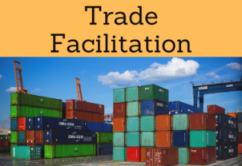
- World Trade Organization (WTO)
- Agreement on Trade in Services (GATS)
- Agreement on the Application of Sanitary Measures
- Agreement on Technical Barriers to Trade
- Agreement on Preshipment Inspection
- Agreement on Safeguards
- Trade Facilitation Agreement
- Convention Harmonization of Frontier Controls of Goods
- Is not a member of the
- BIC
- Chicago Convention (ICAO)
- International Maritime Organization (IMO)
- World Customs Organization (WCO)
- Kyoto Convention
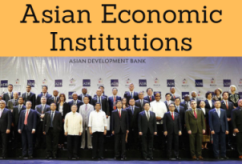
- Economic Commission for Asia (ESCAP)
- Asian Development Bank
- Boao Forum for Asia
- Asia-Middle East Dialogue
- Africa-Asia (Laos) Strategic Partnership
- Asia Cooperation Dialogue
- Laos-Europe Economic Meeting
- Forum Laos-Latin America
- Colombo Plan
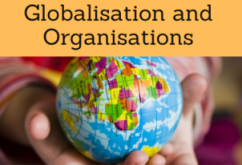
- United Nations
- World Bank
- World Trade Organization (WTO)
- International Monetary Fund
- The only legal political party is the Lao People's Revolutionary Party (LPRP)
- The Lao People's Democratic Republic has a population of 6.8 million
- 50% of the people of Laos are ethnic Lao
- Laotian languages: Lao (official), English, French, and various ethnic languages
- The Laotian Government introduced English at the primary school level in 2010
- Borders of Laos: Vietnam, Thailand, Cambodia, China, and Myanmar
- Capital of Laos: Vientiane
- Type of Government: Marxist-Leninist one-party state
- Independence of Laos: 1949 (France)
- Laotian Area: 236,800 km²
Main religion of Laos: 67% of Laotians are Theravada Buddhist (4 million).
Laos belongs to Buddhist Civilization.
Economy of Laos.
- The Chinese Foreign Direct Investment in the Lao People's Democratic Republic is increasing at a fast rate
- Donor-funded programs accounted for 8.5% of the Laotian GDP
- Despite the global financial crisis, the economy of the Lao People's Democratic Republic has performed moderately well
- The Investment promotion Department, operating under the Ministry of Planning and Investment, formerly known as the Department for Promotion and Management of local and foreign investment, manages Foreign Direct Investment system and reviews investment applications in Agreement to the Investment Promotion Law
- The Laotian National Chamber of Commerce and Industry established in 1989 is an independent body that represents the business community in Laos
- Currency of Laos: Kip (LAK)
Lao Brewery Co., Ltd. was founded in 1973 as a joint-venture between foreign investors and Laotian Businessman initially under the registered name of Lao Beer and Ice Factory. At that time, the company had an annual production capacity of 3 million liters of beer, 1.5 million liters of carbonated drinks and a daily production capacity of 120 tones of ice.
The Xaoban Group produces and supplies home-made yogurt, fruit juice, honey, fruit jam, tomato sauce, pre-packed salad, and salad dressing and other natural seasonal products to customers in Vientiane and other urban areas in Laos.
International Trade and Business in Laos: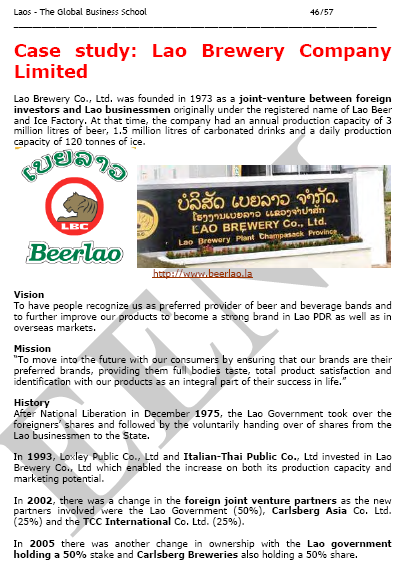
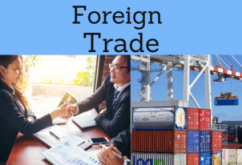
International Trade of the Lao People's Democratic Republic:
- Top Laotian exports products: gold and copper, electricity, wood and wood products, garments, coffee, other agricultural export products, rattan, and tin
- Top Laotian export markets: Thailand, Vietnam, China, Switzerland, the UK, and Germany
- The largest Laotian imports are fuel, food, consumer products, machinery and equipment, vehicles, and spare parts
- Top Laotian import partners: Thailand, Vietnam, China, South Korea, and Belgium
- China is now the largest source of Foreign Direct Investment in Laos
Savan-Seno Special Economic Zone.
- The Savannakhe Province in Laos is a thriving hub of International Trade and services in the Greater Mekong Sub-region
Laos was admitted into the Association of Southeast Asian Nations ASEAN on July 1997 and applied to join WTO in 1998. Laos keeps a “special relationship” with Vietnam and formalized a 1977 treaty of friendship and cooperation that created tensions with China.
Lao is a member of Food and Agriculture Organization, G-77, International Bank for Reconstruction and Development (WB), International Development Association, International Finance Corporation, IMF, UN, United Nations Convention on Trade and Development, United Nations Educational, Social and Cultural Organization, United Nations Industrial Development Organization, WCO, World Intellectual Property Organization (WIPO) and WTO (observer).
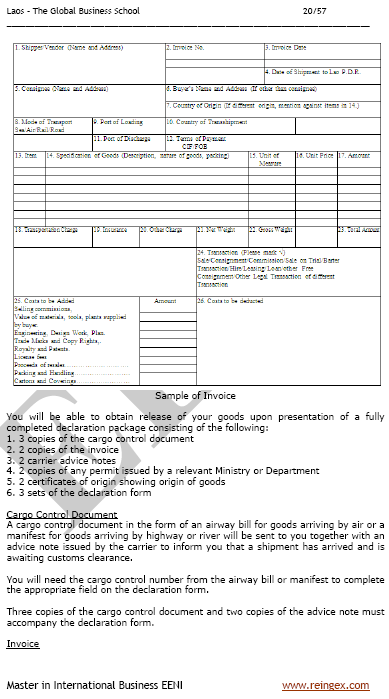
(c) EENI Global Business School (1995-2025)
Top of this page

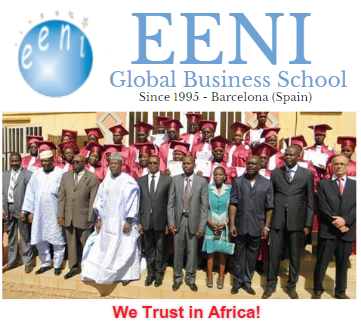



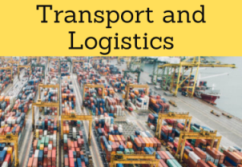
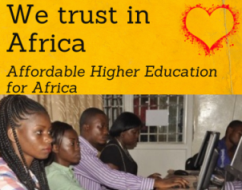


 WhatsApp
WhatsApp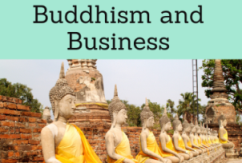
 or
or 
